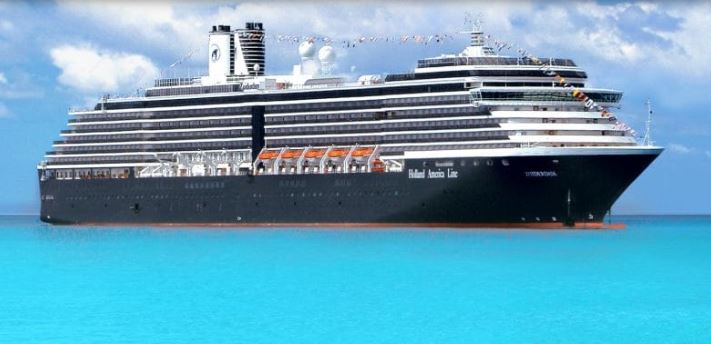
It is well known that a cruise ship’s captain can marry a couple at sea (under certain circumstance). It is perhaps less well known that he or she can also make, and enforce, the law of the high seas.
People who commit offences on board a ship can be confined to their cabin, “jailed” in the brig and expelled from the ship at the next port, with little or no comeback. The captain is the judge, jury and enforcer of the punishment.
It’s that last bit that caused concern for an American woman Elaine Chan and her husband, who was accused of shoving and injuring a crew member of the Holland America’s Zuiderdam.
The couple, who claim to not be involved in the incident at St Petersburg, were given flight tickets and told to get off the ship just five days into their 24-day cruise. At the time of writing, they said they were not shown any evidence that the husband (who, somewhat curiously, doesn’t want to be named) had committed the offence, they were just told they were guilty.
According to Michelle Couch-Friedman, from the non-profit consumer rights group Elliott Advocacy: “It’s yet another troubling case of a company levelling a wild accusation at a customer and refusing to provide even a shred of evidence to support it. And it’s the consumer who pays the price — financially and emotionally.”
The reality of the situation is that the ship’s captain has extraordinary powers.
According to various regulations, the master of a ship can choose and vary the route taken, can order cargo or personal possessions to be thrown overboard, and respond in various ways in terms of security breaches and acts of war. The captain can even beach a ship if it is sinking (which sounds like a reasonable thing to do, I suppose).
But, as we’ve seen in the case of the Costa Concordia, the captain is also liable for his actions and can be held accountable in a land-based court of law. The ship struck rocks and capsized in January 2012, and 32 people died. Its captain, Francesco Schettino, was held accountable and received 16 years in jail on charges of manslaughter, causing a shipwreck and abandoning passengers.
Schettino, who was accused of drinking and “showing off” by sailing too close to the shore, clearly didn’t live up to the high standards required of his profession.
While safe navigation is the captain’s primary concern, he or she also has broad responsibilities as the highest authority on the ship. Given that modern cruise sips can carry up to 8,000 passengers and crew, that’s a lot of power over a lot of people.
As Couch-Friedman notes: “Most cruise lines have terms written into their contracts allowing for the removal of passengers under a variety of conditions. And no refund is provided in most circumstances.”
It would seem to me that the company should be able to provide video footage or other evidence in such cases, when it’s basically one person’s word against another. But they don’t have to. And, I suppose, one would expect any company to side with its long-time employees, including a captain who must have decades of experience to reach that position, over the word of two customers.
While it’s true that terrible things happen at sea, incidents like this are very much in the minority. By one estimate, the annual number of cruise passengers is 20 million. So, of course, people get sick, and sometimes die, and crimes occur, just as they do on land.
It’s impossible for me to know who is right or wrong in this case. All I can say is that after 14 ocean adventures, I’m still up for more.
